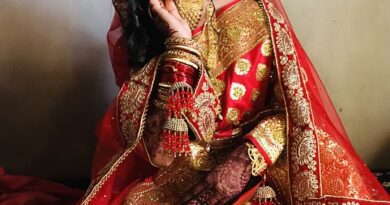Breaking Boundaries: How American Women’s Fashion Challenges Stereotypes
Breaking Boundaries: How American Women’s Fashion Challenges Stereotypes
Fashion has always been a reflection of our society, and one of the most intriguing aspects is how it can challenge long-standing stereotypes. Throughout history, American women’s fashion has been at the forefront of breaking boundaries, defying societal norms, and empowering women to express themselves freely.
From the revolutionary flappers of the 1920s to the gender-bending styles of the 1970s and the body-positive movement of today, American women have used fashion as a tool to challenge stereotypes and redefine societal expectations.
The 1920s marked a turning point in women’s fashion as flappers emerged with their short hairstyles, drop-waist dresses, and a carefree attitude. This era defied the traditional notion of femininity, challenging the idea that women should appear delicate and submissive. Flappers were unapologetically bold, dancing to jazz music, smoking cigarettes, and demanding equal rights. Their fashion choices were a visual representation of their rebellion against societal norms, showcasing a new wave of independence and freedom for women.
Fast forward to the 1970s, and American women’s fashion took another radical turn. With the feminist movement gaining momentum, women ditched the stereotypical girly dresses for flared jeans, pantsuits, and unisex garments. This was an era of self-expression, and women embraced the idea of challenging traditional gender roles by wearing what they wanted. It wasn’t uncommon to see women wearing men’s suits, androgynous hairstyles, and combat boots. This defiance against societal expectations reflected a growing desire for gender equality and marked a significant change in American women’s fashion.
In recent years, fashion has continued to be a powerful force in challenging stereotypes. The body-positive movement has gained widespread popularity, celebrating diversity and challenging the unrealistic beauty standards imposed on women. Plus-size models are taking center stage, and fashion brands are embracing inclusivity, offering a wide range of sizes and styles. This shift has allowed women of all shapes, sizes, and backgrounds to feel empowered and beautiful, regardless of societal expectations.
American women’s fashion has also challenged stereotypes through cultural appropriation. While it’s crucial to recognize harmful stereotypes and cultural disrespect, there have been instances where fashion has broken boundaries by embracing different cultures without appropriating or disrespecting them. This can be seen in the fusion of traditional elements with modern fashion, creating unique and inclusive styles that celebrate diversity and challenge stereotypes.
In conclusion, American women’s fashion has a long history of challenging stereotypes and empowering women to express themselves freely. From the 1920s flappers to the 1970s gender-bending styles and the body-positive movement today, fashion has been at the forefront of societal change. It has defied societal expectations, allowed women to break free from traditional notions of femininity, and pushed for inclusivity and diversity. As fashion continues to evolve, American women will undoubtedly keep breaking boundaries, challenging stereotypes, and rewriting the rules of self-expression.









